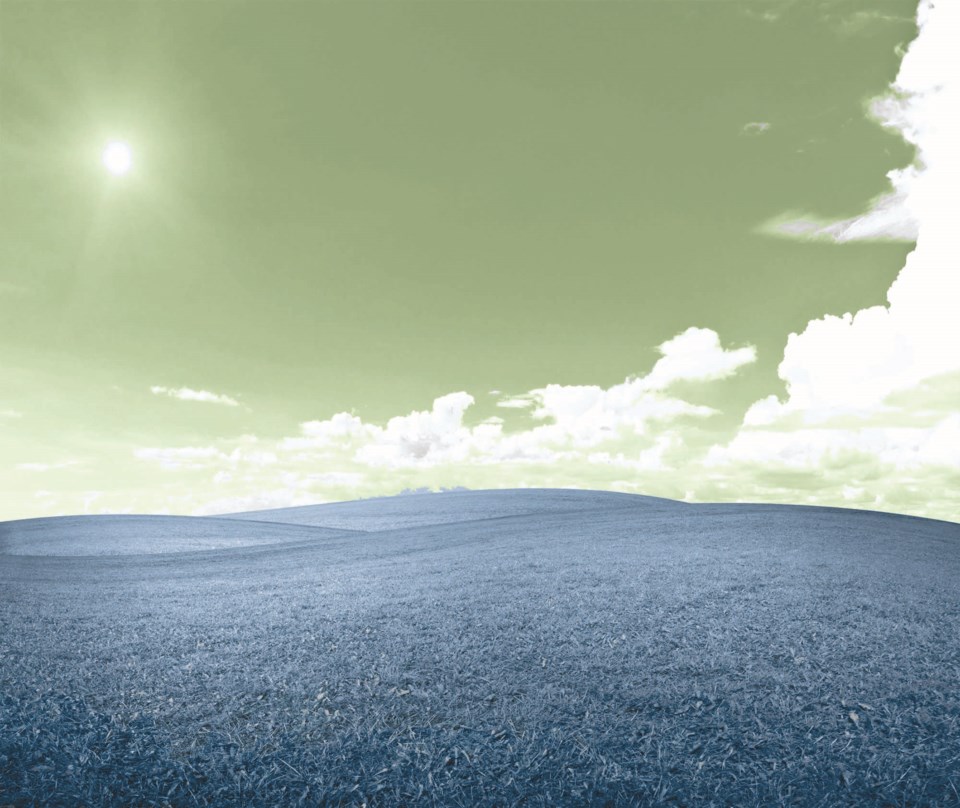Scientific St. Albert
The Gazette is using science to answer questions from students of all ages about the world around them. Send in your questions to [email protected].
Earth generally has green grass and blue skies, observation suggests.
But does it really? And what if it didn’t?
Emily Beaumont of Four Winds Public may have had these questions in mind when she asked Scientific St. Albert, “I wonder if the sky is green and the grass is blue?”
Science says the answer to both her questions is, “Yes, sometimes.”
'Sometimes'?
Sunlight is a mix of red, green, and blue light, explained Erik Rosolowsky, an astrophysicist at the University of Alberta who has previously pondered the question of green versus blue skies. When we look at grass and see green, we are seeing green light reflecting off it — the plant’s chlorophyll absorbs the rest of the colours to produce energy through photosynthesis.
The sky looks blue during the day because of Rayleigh scattering, explained Frank Florian, senior manager of planetarium and space science at the Telus World of Science in Edmonton. Earth’s atmosphere is mostly nitrogen, which is just the right size to scatter the blue wavelengths of light. The sky near the sun looks white because there’s not enough air between you and it to scatter the blue out of the light. As you look away from the sun, the amount of air increases, and you get more scattering and blueness. At sunset, there’s so much air in the way that the blue is scattered too much for us to see, leaving only the longer-wavelength red light and a red sunset.
Earth’s sky does turn green sometimes. Under specific circumstances, light at sunrise and sunset can get scattered in just the right way to create a green flash, Florian said. Droplets during severe thunderstorms can also create green skies by scattering green light, retired Environment Canada meteorologist Dan Kulak said in an email.
You can also get green skies from aurora, Rosolowsky said. Auroras happen when high-energy particles from the sun smack into Earth’s atmosphere, boosting electrons in molecules to unstable energy levels.
“When oxygen is hit by one of these fast moving particles, it gives off a green light,” Rosolowsky said — the result of the boosted electrons shedding a specific quantum of energy as green photons as they return to stability.
A similar phenomenon happens when oxygen atoms get ionized by ultraviolet (UV) light in the day and regain their electrons at night, emitting green light in the process, Rosolowsky noted. This “airglow” results in a green sky, but it’s such a faint green that you’re not likely to notice it unless you’re in orbit or taking a long-exposure photo.
'Blue' grass?
Blue-leafed plants are extremely rare on Earth outside of tropical rainforests, writes University of Adelaide biologist Andrew Lowe. This is because plants get the most energy from photosynthesis from blue light; if they reflected blue, they would be at an evolutionary disadvantage.
Specific types of grass are “blue” if you’re a turfgrass scientist. Jason Pick of the Alberta Turfgrass Research Foundation at Olds College said in an email that researchers describe blue fescue as “blue,” although it’s more of a silvery-green. Other grasses can turn “blue” (really more like a dark green) because of drought.
For maximum efficiency, grass should be black so it absorbs all light. So why is it green?
It’s a matter of stability, research by University of California, Riverside, physicist Nathaniel Gabor suggests. Plants want a steady stream of power for photosynthesis to avoid damaging overloads and brownouts, but shadows cause fluctuations in the amount of power they receive. Most of the sun’s power comes in the form of green light, so if the amount of sunlight changes, it’s green light that sees the biggest swings in availability. To avoid these big swings, green plants like grass reflect green light and get their power from other, less swingy parts of the spectrum.
How to get both
If we really want green skies and blue grass, we have to change stars.
“Most of the stars in our galaxy are tiny little red stars,” Rosolowsky said, and red stars crank out way more red-and-green light than blue.
If we went to a planet with grass that orbited a red sun, it’s conceivable that said grass would have evolved to absorb red and green light, making it blue, Rosolowsky said. (NASA biometeorologist Nancy Kiang writes in Scientific American that a hot blue star could also result in blue grass, while a red star could result in many grass colours, including black.) Rayleigh scattering would still scatter the sun’s blue light, but it would also scatter the more plentiful green, resulting in a green sky.
“A planet around a red star would have a green sky and could make blue grass,” Rosolowsky said.



